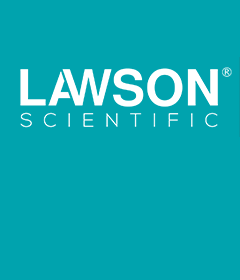Technical
How much do you know about sample preparation for proteomics research?
As the saying goes, a good start is half the battle. If the experiment is to be successful, in addition to having a good idea, sample collection and preprocessing are also crucial. So how should samples be handled in proteomics research? Today, let's talk about the preparation of those common samples in proteomics research!
Animals
Take fresh tissue, remove blood vessels, fat, connective tissue and other interfering tissues that are not related to the study;
Wash blood stains and contaminants with normal saline or PBS, and absorb surface liquid with dust-free absorbent paper;
Cut the tissue into small pieces with a side length of 0.5 cm or about 100 mg;
The tissue blocks were snap-frozen in liquid nitrogen for more than 5 min and stored at -80°C.
For conventional animal tissues such as brain, heart, liver, spleen, lung, kidney, muscle, and skin, the recommended sample volume for quantitative proteome is >200 mg; for modified protein group, the recommended sample volume is >500 mg.
Plants
The aboveground part was washed with sterile water before the samples were isolated, and the samples were collected after drying; the underground part was washed with pre-cooled PBS after the samples were isolated, and the samples were collected after drying with dust-free paper;
Remove non-target tissues and interfering parts such as aging and mildew;
The sample is cut into small pieces, wrapped in tin foil or placed in a freezing tube;
The tissue blocks were snap-frozen in liquid nitrogen for more than 5 min and stored at -80°C.
For routine plant tissues such as young roots, leaves, flowers and callus, the recommended sample size for quantitative proteome is >1g; for modified proteome, it is recommended to send Sample size > 2 g.
blood
血浆样本
Blood collection with routine blood vessels using EDTA anticoagulant and protease inhibitors;
Gently invert 8-10 times to mix;
Immediately centrifuge at 1600 g for 10 min at 4°C;
Transfer the plasma to a centrifuge tube with a pipette, add protease inhibitors, mix well, and centrifuge briefly.
serum samples
collect blood using a vacuum blood collection tube;
Gently mix upside down 5-6 times;
4℃, let stand for 15-30 min;
Centrifuge at 1600 g for 10 min at 4°C;
Transfer the upper layer of pale yellow serum to a centrifuge tube with a pipette, add protease inhibitors, mix well, and centrifuge briefly.
For plasma/serum samples, the recommended sample volume for quantitative proteome is >500 ul.
Cells
Adherent cells
Cells are cultured to 70-90% coverage;
Remove the medium, wash the petri dish three times with 10 ml PBS, turn the petri dish upside down, and control the liquid to dry;
The culture dish was placed on ice, and after trypsinization, PBS was added to suspend the cells;
Collect into 15 ml centrifuge tubes, centrifuge at 400 g-1000 g for 5-10 min at 4°C, and remove PBS;
Resuspend cells in 1 ml PBS and transfer to a new 1.5 ml centrifuge tube;
Centrifuge again with the above conditions, and remove the supernatant as much as possible;
Resuspend in an appropriate amount of PBS, snap-frozen in liquid nitrogen, and store at -80°C.
For suspension/adherent cells, the recommended sample size for quantitative proteome is >1×107个细胞或体积>50ul细胞沉淀;
Recommended sample size for phosphorylated proteome>5×107single cell or volume > 200ul cell pellet;
Acetylated, ubiquitinated proteome>1×108Single cells or volume > 500ul cell pellet.
<p style="font>Microorganisms
Separation of bacteria and culture medium by centrifugation or other methods;
Collect the bacteria into a 15 ml centrifuge tube and wash three times with 10 ml PBS;
Resuspend the bacteria with 1 ml PBS, transfer to a 1.5 ml centrifuge tube and centrifuge, remove the supernatant with a pipette tip, and record the wet weight or volume of the bacteria;
Resuspend with an appropriate amount of PBS, aliquot 100 ul per tube, snap-frozen in liquid nitrogen, and store at -80°C.
For microbial cells, the recommended sample volume for quantitative proteome is >100mg wet weight or >100ul in volume; the recommended sample volume for modified proteome is >300mg wet weight or Volume > 300ul.
Glue Dispensing Strips
胶点胶条
Adhesive dots/strips or swimming lanes can be used. Coomassie brilliant blue staining is recommended, and the strips are required to be clear and non-degraded.
IP / Co-IP / Pull-down sample
The protein eluent requires that the total amount of protein is greater than 5ug, and the protein solution is subjected to SDS-PAGE electrophoresis. You can choose one of the two electrophoresis methods below.
For the protein eluate, run the separation gel 5cm (SDS-PAGE without stacking gel), cut the 5cm strip, and put it into a 1.5ml centrifuge tube.
Protein eluate, run SDS-PAGE standard gel, cut out the target band, and put it into a 1.5ml centrifuge tube.
Considering that animals, plants, cells, microorganisms, and glue-dispensing strips are highly concerned by everyone, today I will introduce you here first. If you have more difficult special samples and don't know how to deal with them, you can also give Xiaobian message! After sharing the collection and preprocessing of common samples, we will sort out the protein extraction methods for different types of samples in the next issue. Please pay attention to www.tissuy.com~




